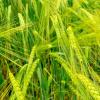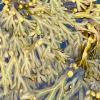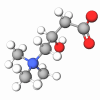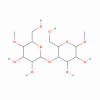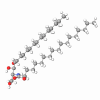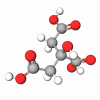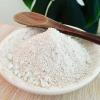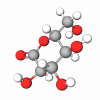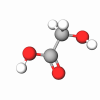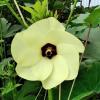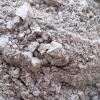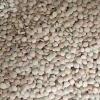Made from ground pits of the Montmorency cherry (Bitter Cherry), Prunus Cerasus Shell Powder is a delicate mechanical exfoliating suitable for all skin types. It is a fine, beige-colored powder with a light sweet almond fragrance. Used in shower gel, face, or body scrub, Prunus Cerasus shell powder eliminates impurities, restores the radiance, softens, and evens out the tone of the skin. In addition, it makes easier penetration for other actives in the formula.
At first, the pits are washed in water and brushed, so as to eliminate any residual traces of flesh. They are then dried, crushed, and sorted so as to eliminate the kernels. The various micro-organisms that might be present on the shells obtained in this way are eliminated using a technology, which combines vibration and induction heating.
They are then cryogenically ground so as to obtain a powder with granulometry is an average of 300 μm, with a Gaussian distribution of between 150 and 500 μm. A special cryogenic grinding makes it possible to achieve temperatures sufficiently low to harden and weaken the substances to be ground while avoiding thermal degradation. The quality and effectiveness of these technologies make it possible to guarantee the optimum microbiological and physico-chemical properties of the Prunus Cerasus shell powder.
The technologies and manufacturing methods of the Prunus Cerasus shell powder are Eco-friendly and safe for the environment, so this ingredient is eligible for Ecocert approval. This ingredient is approved and is used for the formulation of certified exfoliating products.History
Even if the land of origin of the cherry tree remains uncertain to this day, it was already present in Europe 3,000 years before our times: according to certain elements encountered in lakeside Swiss cities from the Stone Age, our Neolithic ancestors were making wine from cherries before they turned their attention to grapes, better suited to this type of transformation.
Migratory birds coming from the East are believed to have spread the pits during flight, thus sowing the first wild cherry trees. Legend has it that Lucillus, a Roman general, was the first to bring cherry trees from Cerasos, a city located on the Black Sea in which the trees were abundant and which inspired their name. Whatever really happened, it was certainly the Romans who first spread the cherry tree throughout their empire, the fruit forming part of the typical diet of legionnaires.
In the Middle Ages, cherries were highly popular in France, England, and Germany from the formation of the colonies, they were introduced into North America. By the Renaissance, people already understood how to obtain early cherries. Louis XV, a great lover of cherries, encouraged the growth and development of new varieties. At the end of the 19th century, Montmorency was famed for its cherry harvests: Parisians would flock to the town at harvest time to taste the sour, fragrant cherries. The cherry tree has a spontaneous ability to cross-pollinate, and natural hybridization quickly produces new fruits. There are currently over 600 varieties, all coming from two original stocks.

